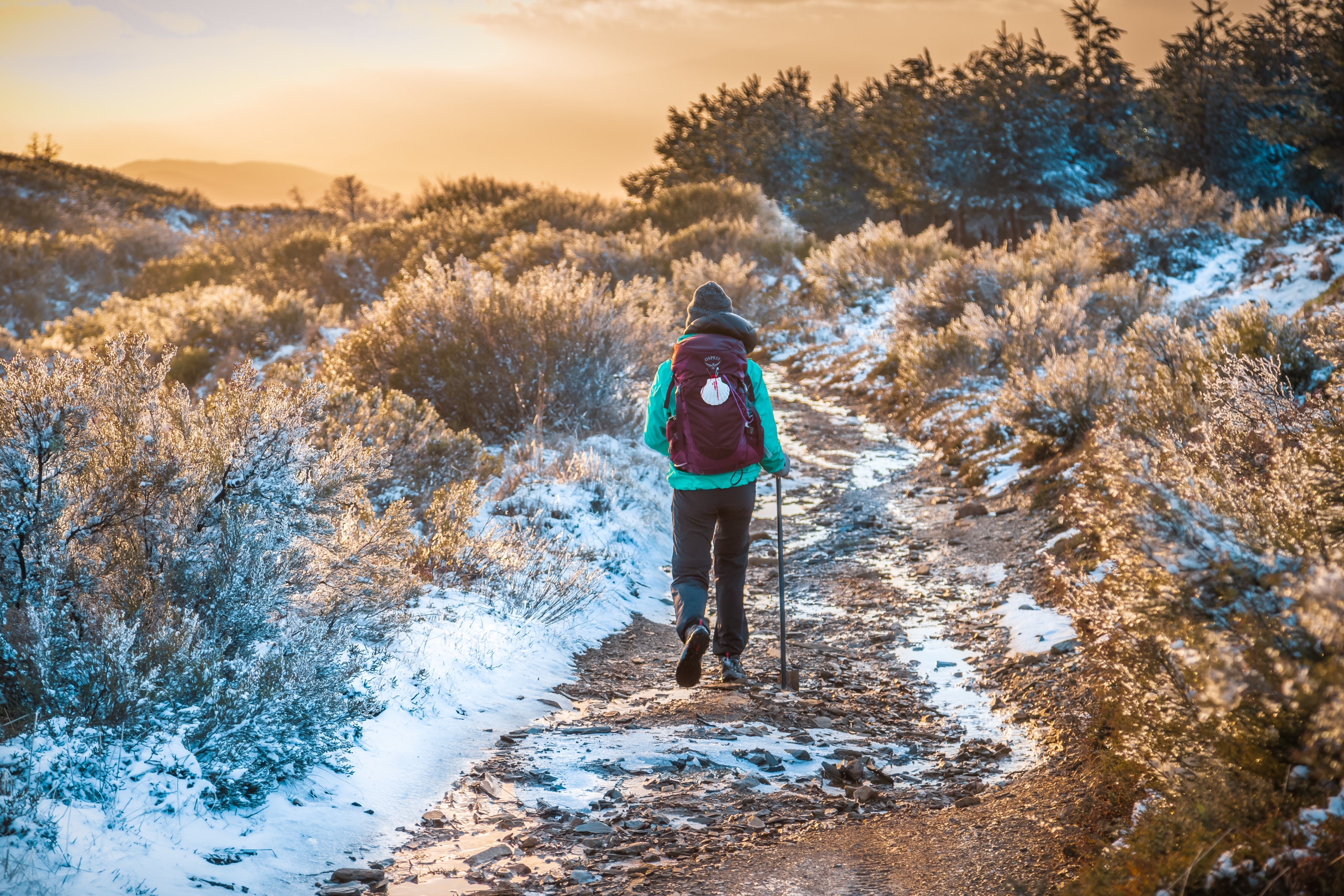“There’s no such thing as bad weather, only bad clothing.” This Norwegian proverb encapsulates the wisdom of living in harmony with nature in all seasons. With the arrival of colder months, the allure of a walk may seem less tempting, but beneath the chill and frost lie extraordinary benefits for both mind and body. As writer Henry David Thoreau once said, “The best time to go for a walk is when you feel like you don’t want to.”
But is walking in the cold truly healthy? What are the benefits? And what risks should you be aware of? Let’s explore the pros and cons of this growing wellness trend, focused on reconnecting with oneself and nature.
Benefits of Walking in Cold Weather
1. Improved Circulation
Cold weather stimulates our circulatory system. Blood vessels constrict to retain heat, but walking prompts movement that dilates them again, improving blood flow. According to Harvard Health, this process strengthens the heart and peripheral vessels, reducing the risk of cardiovascular disease.
2. Increased Calorie Burn
Did you know that walking in the cold burns more calories? Your body works harder to maintain its core temperature, leading to increased energy expenditure. This makes it an ideal activity for staying fit during the holiday season, when higher-calorie foods often beckon.
3. Boosted Immune System
Moderate exposure to cold can strengthen the immune system. This effect, known as cold conditioning, stimulates the production of white blood cells, helping combat viruses and bacteria. According to *Experience Life* magazine’s article, *The Health Benefits of Cold Conditioning*, this practice offers various advantages, such as:
- Cold Showers: Ending your shower with 30–60 seconds of cold water boosts circulation and builds cold tolerance.
- Ice Baths: Immersing yourself in ice-cold water for 2–5 minutes can reduce muscle inflammation and improve recovery.
- Cold Water Swimming: Swimming in cold lakes, rivers, or oceans stimulates the cardiovascular system and metabolism.
- Outdoor Exercise in Cold Weather: Activities like running or hiking in cold conditions enhance the immune system and build resistance to the cold.
- Breathing Techniques: Often combined with cold exposure (e.g., the Wim Hof Method), these techniques help manage the body’s response to cold and reduce stress.
These practices can be tailored to individual needs and comfort levels, promoting long-term physical and mental well-being.
4. A Mood Boost
Intense cold doesn’t dampen the release of endorphins; in fact, it can amplify them. Walking outdoors in brisk air stimulates the release of feel-good hormones. Natural light, even when filtered through clouds, helps combat Seasonal Affective Disorder (SAD). Imagine walking through snow-laden trees, hearing the crunch of your steps, and watching your breath form puffs in the air. It’s pure vitality!
Challenges and Risks of Walking in the Cold
1. Risk of Hypothermia
Walking in freezing temperatures poses a risk of hypothermia, especially if you’re not dressed properly. When the body loses heat faster than it can produce it, core temperature can drop dangerously. The key is to dress in layers and protect extremities like hands, feet, ears, and the head.
2. Slips and Falls
Ice and snow can make paths treacherous. Falls are a real danger, especially with inappropriate footwear. Experts recommend non-slip soles or crampons for trekking to maintain stability on icy surfaces.
3. Silent Dehydration
You may feel less thirsty in cold weather, but dehydration is still a concern. Breathing cold, dry air and losing fluids through sweat (less noticeable in winter) can disrupt your body’s hydration balance. Always carry a thermos with water or warm herbal tea.
4. Respiratory Issues
Cold, dry air can irritate the respiratory tract, causing bronchospasms in asthmatic or sensitive individuals. Covering your nose and mouth with a scarf can help warm the air before it reaches your lungs.
Practical Tips for the Perfect Winter Walk
- Layer Your Clothing: Start with a moisture-wicking base layer, add a thermal mid-layer, and finish with a waterproof jacket. Synthetic fabrics or merino wool are ideal for maintaining warmth and breathability.
- Protect Extremities: Wear thermal gloves, socks, and a hat. Hands, feet, and the head lose heat quickly.
- Warm Up Before You Start: Light exercises before heading out help prepare muscles for the cold.
- Walk in Daylight: Take advantage of midday light or use a headlamp if walking at dusk.
- Stay Hydrated and Take Breaks: Pausing for a warm drink can work wonders for both body and spirit.
Wellness Trend: Winter Walking as Therapy
Mindful winter walking is one of the latest wellness trends. Often combined with forest bathing (Shinrin-yoku) or moving meditation, it’s a practice that promotes harmony between body and spirit. In Scandinavia and Japan, walking in cold weather is seen as a therapeutic activity.
For many, braving the cold is a metaphor for life itself: stepping out of one’s comfort zone and discovering energy in unexpected places. As writer Albert Camus beautifully expressed, “In the depths of winter, I finally learned that within me lay an invincible summer.”
Whether you’re seeking a boost of endorphins, a break from daily stress, or simply a way to embrace the cold season with friends, winter walking has it all. Don’t let a few degrees below zero hold you back. Lace up your boots, breathe deeply, and set off!





